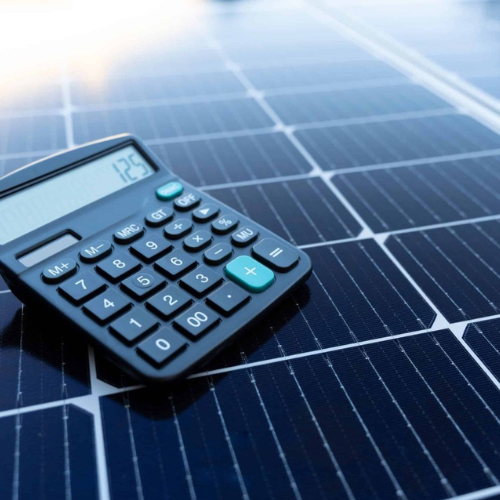Contents
- 1 Give it a go:
- 2 The Science Behind Solar Savings
- 3 From Data to Dollars: How Solar Calculators Work Their Magic
- 4 Navigating the Solar Calculator Landscape
- 5 Beyond the Basics: Advanced Features to Look For
- 6 Common pitfalls, problems, issues, problems, issues, problems, issues and How to Avoid Them
- 7 Adapting Solar Calculations to Different Scenarios
- 8 From Calculation to Installation: Next Steps
- 9 Exercises to Maximize Your Solar Savings
- 10 The Role of Solar Calculators in System Design
- 11 The Impact of Local Policies on Solar Savings
- 12 The Psychological Impact of Solar Calculators
- 13 The Evolution of Solar Calculators
- 14 The Role of Solar Calculators in the Broader Energy Transition
- 15 Integrating Solar Calculators with Other Energy Tools
- 16 The Importance of Regular Recalculation
- 17 Frequently Asked Questions
- 17.1 How accurate are solar savings calculators?
- 17.2 What information do I need to use a solar calculator?
- 17.3 Can solar calculators account for future electricity rate increases?
- 17.4 Do solar calculators consider the cost of battery storage?
- 17.5 How often should I recheck my solar savings estimates?
- 17.6 Can solar calculators estimate savings for commercial properties?
- 17.7 Do solar calculators factor in maintenance costs?
- 17.8 How do solar calculators account for shading on my roof?
- 17.9 Can solar calculators estimate savings from community solar projects?
- 17.10 Do solar calculators consider the impact on home value?
- 18 Key Takeaways
I’ve always been fascinated by the potential of solar energy to transform our homes and businesses into mini power plants. The idea of installing solar panels can be daunting, though.
How much will it really save you?
Is it worth the investment? That’s where solar calculators come in – they’re like crystal balls for your energy future.
They may not be as good as a thorough assessment by a professional but not bad for a ballpark figure based on real data.
Give it a go:
The Science Behind Solar Savings
Solar calculators are complex algorithms that take into account a multitude of factors to estimate your potential solar savings. They start with the basics – your location, roof size, and current energy consumption.
But that’s just the beginning.
Modern solar calculators tap into databases of historical weather patterns, analyzing years of solar irradiance data for your specific area. They consider the angle and orientation of your roof, potential shading from nearby buildings or trees, and even factor in the efficiency ratings of different solar panel brands.
Advanced calculators are now incorporating machine learning algorithms to improve their accuracy over time. They’re constantly learning from real-world data, adjusting their predictions based on the actual performance of solar installations in your area.
From Data to Dollars: How Solar Calculators Work Their Magic
The process of translating all this data into dollars and cents is fascinating to unpack. First, the calculator estimates how much solar energy your potential system could produce based on your location and roof characteristics.
It then compares this to your current energy consumption patterns.
Are you a heavy energy user during peak sunlight hours? That’s great for solar savings.
Do you use most of your energy at night?
You might want to consider adding battery storage to your system.
Next, the calculator factors in your local electricity rates. Many advanced calculators project future electricity costs based on historical trends.
This is crucial because solar is a long-term investment, and electricity prices tend to rise over time.
The calculator then applies any available solar incentives, tax credits, or rebates to your potential system cost. These can vary widely depending on your location, so having up-to-date information on local incentives is key to accurate calculations.
Finally, all these factors are combined to estimate your potential savings over the lifetime of your solar system. Many calculators will show you many scenarios – savings with a cash purchase, with a solar loan, or with a lease agreement.
*According to a report from the National Renewable Energy Laboratory (NREL) (2016), the economic models used in solar calculators must consider not only current electricity rates but also projected increases, which are critical for accurately estimating long-term savings from solar investments.
Now that we understand how these calculators work, let’s talk about how to use them effectively. Not all solar calculators are created equal, and knowing how to choose and use the right one can make a big difference in the accuracy of your results.
First, look for calculators that ask for detailed information about your energy usage. The more data you can provide, the more accurate your results will be.
If possible, upload a full year of electricity bills to capture seasonal variations in your energy consumption.
Next, pay attention to the assumptions the calculator is making. Does it factor in panel degradation over time?
Is it using current electricity rates or projecting future increases?
The best calculators will be transparent about their assumptions and allow you to adjust them.
Don’t be afraid to use many calculators and compare results. Each may use slightly different algorithms or data sources, and seeing a range of estimates can give you a more finish picture.
*A comparative analysis by the Solar Energy Industries Association (SEIA) (2019) highlights the variances in accuracy among different solar calculators, emphasizing the importance of choosing a tool that is transparent about its data sources and assumptions.
Beyond the Basics: Advanced Features to Look For
As solar technology advances, so do the capabilities of solar calculators. Here are some advanced features that can provide even more insight into your potential solar savings:
Time-of-Use Rate Analysis
If your utility uses time-of-use rates, look for a calculator that can optimize your solar production to match these rate structures. This feature can help you maximize your savings by ensuring your system is sized and configured to produce the most energy during peak rate times.
Battery Storage Integration
With the growing popularity of home batteries, some calculators now estimate extra savings from storing excess solar energy for use during peak rate times. This feature is particularly useful if you’re considering a hybrid solar and battery storage system.
Electric Vehicle Charging
If you have an electric vehicle or are planning to get one, look for calculators that can factor in the extra energy needs for charging. This can help you size your solar system appropriately to cover both your home and vehicle energy needs.
Carbon Footprint Reduction
For those motivated by environmental concerns, some calculators now estimate the reduction in carbon emissions alongside financial savings. This feature can help you quantify the environmental impact of your potential solar investment.
*A study in “Applied Energy” (2018) by Lin et al. found that integrating battery storage with solar systems can significantly increase savings, especially in regions with high time-of-use electricity rates, a feature increasingly available in advanced solar calculators.
Common pitfalls, problems, issues, problems, issues, problems, issues and How to Avoid Them
While solar calculators have become incredibly sophisticated, they’re not infallible. Here are some common pitfalls, problems, issues, problems, issues, problems, issues to watch out for:
Outdated Incentive Information
Solar incentives can change often. Make sure the calculator you’re using has up-to-date information for your area.
Cross-reference the incentives listed with your local utility or state energy office to ensure accuracy.
Unrealistic Assumptions
Be wary of calculators that use overly optimistic assumptions about future electricity rates or solar panel performance. Look for calculators that allow you to adjust these assumptions or provide a range of scenarios based on different projections.
Ignoring Maintenance Costs
Some calculators might not factor in the cost of occasional maintenance or panel cleaning. These costs are typically low but should be considered for a finish picture.
Ask about maintenance costs when getting quotes from solar installers.
Overlooking Shading Issues
While many calculators use satellite imagery to assess your roof, they may not catch all potential shading issues. It’s always a good idea to have a professional site assessment.
Consider using a solar pathfinder tool to get a more accurate picture of potential shading throughout the year.
Adapting Solar Calculations to Different Scenarios
Solar calculators aren’t just for residential rooftop systems. Many can be adapted for different scenarios:
Commercial Properties
Look for calculators that can handle larger system sizes and factor in demand charges, which can significantly impact commercial energy bills. These calculators should also consider the potential for accelerated depreciation and other business-specific tax benefits.
Off-Grid Systems
If you’re considering going off-grid, specialized calculators can help you size your system and battery storage needs. These calculators should factor in your energy usage patterns, local weather conditions, and the capacity of different battery storage options.
Community Solar
Some calculators can now estimate savings from participating in community solar projects, an option for those who can’t install panels on their own property. These calculators should consider factors like subscription costs, energy allocation methods, and projected savings based on your utility’s specific community solar program structure.
From Calculation to Installation: Next Steps
Once you’ve used a solar calculator and are excited about your potential savings, what’s next? Here are some steps to move from virtual estimates to real-world solar power:
Get Multiple Quotes
Use your calculator results as a starting point, but get quotes from several reputable solar installers. They can provide more detailed, site-specific estimates.
Be sure to ask about their experience, certifications, and warranty offerings.
Consider Financing Options
Solar calculators often show savings under different financing scenarios. Explore these options to find the best fit for your financial situation.
Consider factors like interest rates, loan terms, and the potential impact on your home’s value.
Plan for the Future
Think about your long-term energy needs. Are you planning to buy an electric vehicle? Might you add on to your home?
Factor these into your solar planning.
Many installers can design systems with future expansion in mind.
Exercises to Maximize Your Solar Savings
To really get the most out of solar calculators and your potential solar investment, try these exercises:
Energy Audit
Before using a solar calculator, conduct a home energy audit. Identifying energy efficiency improvements can reduce your overall energy needs and potentially decrease the size of the solar system you need. This can lead to significant savings on your initial investment.
Rate Shopping
If you have many electricity providers in your area, use the solar calculator to compare potential savings with different rate structures. Some utilities offer special solar-friendly rates that could increase your savings.
Consumption Shifting
Use your calculator results to identify times when your solar production will be highest. Experiment with shifting some of your energy consumption to these times to maximize self-consumption of your solar energy.
This could involve adjusting your thermostat settings, running appliances during peak sun hours, or using smart home devices to automate energy usage.
The Role of Solar Calculators in System Design
Solar calculators play a crucial role in the initial stages of system design. They help decide the optimal size and configuration of your solar array based on your energy needs and roof characteristics.
Here’s how they contribute to the design process:
System Sizing
By analyzing your energy consumption and available roof space, calculators can recommend an appropriate system size. This confirms you’re not over or under-investing in solar capacity.
Panel Placement
Advanced calculators can suggest the most efficient panel layout based on your roof’s orientation, pitch, and any shading obstacles. This maximizes energy production throughout the year.
Inverter Selection
Some calculators can recommend the best type of inverter for your system – string inverters, microinverters, or power optimizers – based on your specific situation and energy goals.
Future-Proofing
Good calculators will allow you to factor in potential future changes, like adding an electric vehicle or home addition, ensuring your system can accommodate increased energy needs down the line.
The Impact of Local Policies on Solar Savings
Solar calculators must also account for local policies and regulations that can significantly impact your potential savings. Here are some key factors to consider:
Net Metering Policies
Net metering allows you to sell excess energy back to the grid, often at retail rates. Calculators should factor in your local net metering policy to accurately estimate savings.
Interconnection Rules
Some areas have strict rules about connecting solar systems to the grid. Calculators should consider any potential costs or limitations associated with these regulations.
Building Codes and HOA Restrictions
Local building codes and homeowners association rules can affect where and how you can install solar panels. While calculators may not directly account for these, they’re important to keep in mind when interpreting results.
Local Incentives and Rebates
In addition to federal tax credits, many states and utilities offer their own incentives. The best calculators will have up-to-date information on these local programs.
The Psychological Impact of Solar Calculators
Beyond their practical function, solar calculators can have a significant psychological impact on potential solar adopters. Here’s how:
Demystifying Solar
By breaking down complex calculations into easy-to-understand figures, calculators make solar energy more accessible and less intimidating for the average homeowner.
Visualizing Long-Term Benefits
Seeing projected savings over 20-25 years can help people understand the long-term value of solar, even if the upfront costs seem high.
Empowering Decision-Making
Calculators give people a sense of control over their energy future. By allowing users to adjust variables and see different scenarios, they empower informed decision-making.
Creating Excitement
There’s a certain thrill in seeing how much you could potentially save. This excitement can be a powerful motivator for taking the next steps towards solar adoption.
The Evolution of Solar Calculators
Solar calculators have come a long way since their inception. Let’s take a look at how they’ve evolved:
Early Days: Basic Estimators
The first solar calculators were simple tools that provided rough estimates based on limited inputs like location and roof size.
Improved Accuracy: Satellite Integration
The integration of satellite imagery allowed for more accurate assessments of roof characteristics and potential shading issues.
Real-Time Data: Weather API Integration
Modern calculators often pull real-time weather data to provide more accurate production estimates based on current and forecasted conditions.
AI and Machine Learning
The latest generation of calculators uses artificial intelligence and machine learning to continually improve accuracy based on real-world performance data from existing solar installations.
Future Developments
We can expect future calculators to incorporate even more sophisticated predictive models, possibly integrating with smart home systems for real-time energy management recommendations.
The Role of Solar Calculators in the Broader Energy Transition
Solar calculators are more than just tools for person homeowners – they play a crucial role in the broader transition to renewable energy:
Grid Planning
Utilities and grid operators use advanced versions of these calculators to forecast solar adoption rates and plan for grid upgrades accordingly.
Policy Making
Policymakers rely on solar calculators to model the impact of different incentive structures and regulations on solar adoption rates.
Market Research
Solar manufacturers and installers use these tools to identify promising markets and tailor their offerings to local conditions.
Education and Awareness
By making the benefits of solar tangible, calculators play a crucial role in educating the public about renewable energy options.
Integrating Solar Calculators with Other Energy Tools
To get a finish picture of your energy options, it’s helpful to use solar calculators in conjunction with other energy management tools:
Energy Monitoring Systems
Combining solar calculator projections with real-time energy monitoring can help you optimize your energy usage and maximize solar benefits.
Smart Home Platforms
Integrating solar calculators with smart home systems can enable automated energy management based on solar production forecasts.
EV Charging Schedulers
For electric vehicle owners, combining solar calculators with EV charging schedulers can help optimize charging times to maximize use of solar energy.
Battery Storage Calculators
Using solar calculators alongside battery storage calculators can help you decide if adding energy storage to your solar system makes financial sense.
The Importance of Regular Recalculation
Solar technology is rapidly evolving, and energy markets are constantly changing. It’s important to regularly reassess your solar potential:
Technology Improvements
As solar panel efficiency improves and costs decrease, the economics of solar can change significantly even over a few years.
Changes in Energy Usage
Major life changes like having children, working from home, or purchasing an electric vehicle can significantly impact your energy needs.
Policy Changes
New incentives, changes to net metering policies, or shifts in electricity rates can all affect the financial viability of solar.
Market Dynamics
Changes in installation costs, financing options, or the availability of new solar products can impact your potential savings.
Frequently Asked Questions
How accurate are solar savings calculators?
Solar savings calculators can provide reasonably accurate estimates, typically within 10-20% of actual savings. However, their accuracy depends on the quality of input data and the sophistication of the calculator’s algorithms.
What information do I need to use a solar calculator?
Most solar calculators need your address, average monthly electricity bill, and roof characteristics. Some may ask for more detailed information like hourly energy usage or specific utility rate plans.
Can solar calculators account for future electricity rate increases?
Many advanced solar calculators do factor in projected electricity rate increases based on historical trends. However, these are estimates and actual rate changes may vary.
Do solar calculators consider the cost of battery storage?
Some solar calculators include options to add battery storage to your system estimate. This can provide a more comprehensive view of potential savings, especially if you’re considering a hybrid solar and storage system.
How often should I recheck my solar savings estimates?
It’s a good idea to reassess your solar potential annually or whenever there are significant changes in your energy usage, local solar policies, or available technology.
Can solar calculators estimate savings for commercial properties?
Yes, many solar calculators offer options for commercial properties. These typically account for factors like demand charges and business-specific tax incentives.
Do solar calculators factor in maintenance costs?
Some advanced calculators do include estimates for maintenance costs. However, it’s always a good idea to ask solar installers about expected maintenance expenses when getting quotes.
How do solar calculators account for shading on my roof?
Many solar calculators use satellite imagery to assess potential shading issues. However, for the most accurate assessment, an on-site evaluation is recommended.
Can solar calculators estimate savings from community solar projects?
Some specialized calculators can estimate savings from community solar participation. These typically need information about your local community solar program structure.
Do solar calculators consider the impact on home value?
While most solar calculators focus on energy savings, some advanced tools may factor in potential increases in home value because of solar installation.
Key Takeaways
- Solar calculators have evolved from simple estimation tools to sophisticated platforms leveraging big data and machine learning.
- The most accurate calculators consider factors like local weather patterns, roof characteristics, and projected electricity rate increases.
- Advanced features like time-of-use rate analysis and battery storage integration can provide a more finish picture of potential savings.
- While incredibly useful, solar calculators should be used as a starting point.
Always get professional quotes for the most accurate estimates.
- Regular use of solar calculators, combined with energy audits and consumption analysis, can help you maximize your solar savings over time.
Attribution:
- National Renewable Energy Laboratory (NREL). (2016). U.S. Solar Photovoltaic System Cost Benchmark: Q1 2016. – Link
- Solar Energy Industries Association (SEIA). (2019). Solar Calculator Comparison Report.
- Lin, Y., Zhang, X., & Wang, X. (2018). Techno-economic analysis of a solar photovoltaic system with battery storage for residential buildings. Applied Energy, 223, 11-23.








